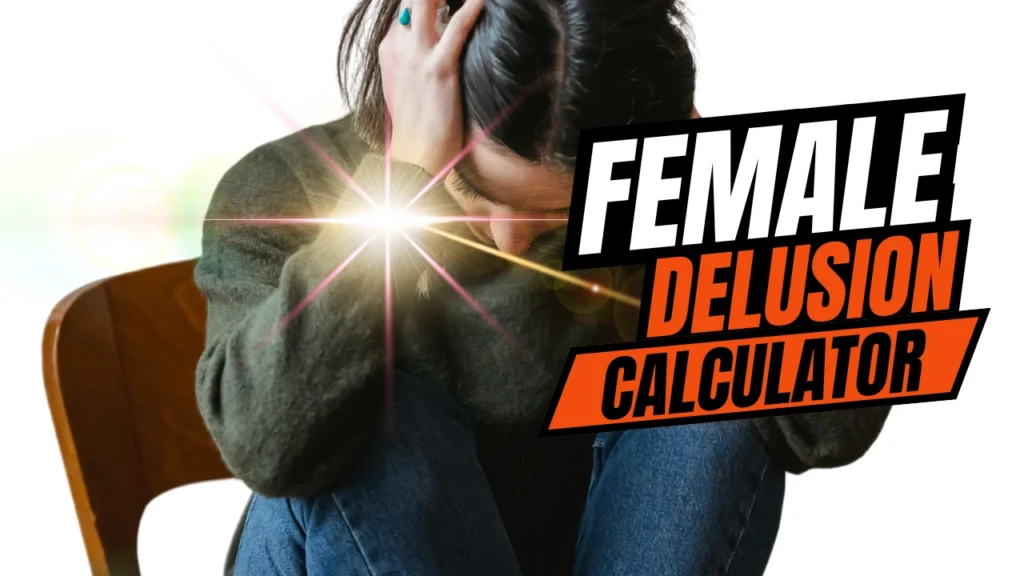
The Female Delusion Calculator
We often have an ideal person in mind when looking for a perfect partner. But how likely is it that such a person actually exists? The Female Delusion Calculator is a tool designed to help people understand how realistic their dating expectations are.
This fun and insightful tool provides a reality check by using real-world data to estimate the chances of finding a partner who meets your specific criteria. It can also give you a delusional score to see how high or low your standards are.
Feel Free to ask anything we are here to help you.
What is the Female Delusion Calculator?
The Female Delusion Calculator is a tool that calculates the percentage of people who meet the preferences you set for an ideal partner. You just have to put in your details, such as age, height, income, and some others, which are shown in the tool, and then the tool will give you a realistic idea of how common or rare your dream partner is.
This tool is called by different names, like Reality Calculator, Dating Standards Calculator, Female Delusion Test, or My Ideal Woman Calculator, because it helps people measure their expectations against real-world statistics. Some also refer to it as the Delusional Woman Calculator or the Female Delusion Calculator for Guys when analyzing dating expectations from a male perspective.
Table of Contents
How Does the Female Delusion Calculator Work?
The calculator takes various inputs and compares them to demographic data. You can enter details like:
• Age range – The age of your ideal partner
•. Height – How tall you want them to be
• Income – Their yearly earnings
• Marital status – Whether they should be single, divorced, or widowed
• Education level – The minimum education level you prefer
• Physical traits – Preferences such as weight and appearance
Once you enter these details, the calculator generates a percentage that shows how many people match your criteria. If the percentage is very low, it means your preferences may be quite rare in reality.

How to Use the Female Delusion Calculator
• Input Your Preferences: Enter details such as age range, height, income, education level, and relationship status.
• Analyze the Results: The tool will show you the percentage of people that fit your criteria.
• Reflect on the Findings: If your match percentage is very low, consider adjusting some non-essential preferences.
• Try Different Scenarios: Experiment with different criteria to see how changes affect your match percentage.
Is the Female Reality Calculator Scientific?
The calculator is based on real demographic data from sources like census reports and surveys. However, it is not a strict scientific tool. It is meant to provide a fun reality check rather than an absolute prediction of your love life. Relationships depend on many factors beyond statistics, such as personality, shared interests, and emotional connection.
Using the Female Delusion Calculator, Delusion Scale, or other similar tools can be a helpful way to assess your dating expectations and see if they align with reality. While numbers can provide insight, it’s important to remember that attraction and compatibility go beyond data points.
What If My Match Percentage is Too Low?
If the results show that very few people match your criteria, don’t worry! This does not mean you should lower your standards, but it might be worth reconsidering if some preferences are too restrictive.
Ask yourself:
1. Are these qualities truly necessary for a happy relationship?
2. Could I be more flexible in certain areas?
3. What are my non-negotiable traits versus my “nice to have” traits?
Being open-minded can increase your chances of finding a great partner while still maintaining your core values.
Other Similar Tools
There are various names for this type of tool, such as:
• Delusional Test: A tool to check how realistic your dating standards are.
• Dating Percentage Calculator: A tool that calculates the percentage of people who fit your dating preferences.
• Female Delusion Calculator for Men: This version helps men assess their expectations of women.
• Reality Calculator Female: A tool that helps women see the real availability of their ideal partner.
Each of these tools serves a similar purpose: helping individuals understand how their expectations align with reality.
If more info to how to happy in relationship click here.

Advantages of Using the Female Delusion Calculator
• Helps users make better dating choices based on real-world statistics.
• Encourages self-reflection on dating standards and expectations.
• Helps individuals focus on important traits rather than superficial criteria.
• Assists in adjusting expectations to increase dating success.
• Users can see areas where they might be able to compromise without settling.
Disadvantages of the Female Delusional Calculator
• While useful, the tool only considers demographics and does not account for personality, chemistry, or shared values.
• The accuracy depends on available data sources, which may not always be up-to-date.
• It does not ensure compatibility or attraction, even if someone fits all the criteria.
• Some users may take results too seriously, leading to frustration or discouragement.
Read about. The Delusion of Grandeur

Conclusion
The Female Delusion Calculator is a fun way to explore dating expectations and see how well they align with reality. While it is based on real data, it should not be taken too seriously. Finding the right partner involves more than just statistics, it’s about personality, values, and connection.
So, if you’re curious to see how rare or common your ideal partner is, give the calculator a try! It might just give you a new perspective on your dating journey.
